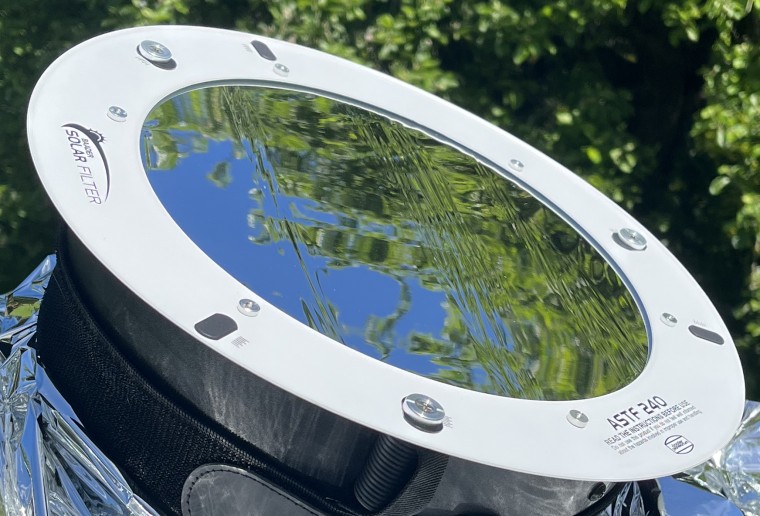
These are by no means “tension lines”. Much to the contrary – this image is the clear proof that we do not at all put the film under tension when mounting it!
These “ripples” (if you want) are inevitable to appear during the production process, because during all the several steps that the film must be subjected to, it is totally forbidden to stretch it in any way. Exactly this stretching would destroy the optical quality (= absence from astigmatism) once and for all.
All too many users who buy our film (most of all the Chinese offerings of extremely cheap cell mounted solar filters) do overstretch the poor film as if they want to produce a drum. This does “look” wonderful indeed if you look
at the product, but the quality of solar details looks awful when you look
through such a “drum-filter”…
The filter does not need to be flat like a high-end glass filter, but it must be free from tension. This can only be the case when it can “work” in the filter cell. If the film is glued e.g. into simple a black plastic cell, the cell will get warmer in the sun, expand and stretch film – so that the image will get blurry and without contrast. That’s why we mount the film for telescopes, which use higher magnifications, in temperature-compensating ASTF filter cells.
On the other hand, a good glass filter in front of the telescope needs the same optical precision as the lens of the telescope, and would be in a similar price range as our D-ERF pre-filters which are used only in combination with H-alpha-filters. The nice and cheap glass filters are more in the quality range of window glass instead of optical lenses…
So again – if we were to “flatten out these ripples” by stretching them flat, then indeed you would complain about “blurry image above 60-times magnification” – just as it is seen when buying a “precision glass solar filter” (meaning: the affordable “window-glass” filters).
